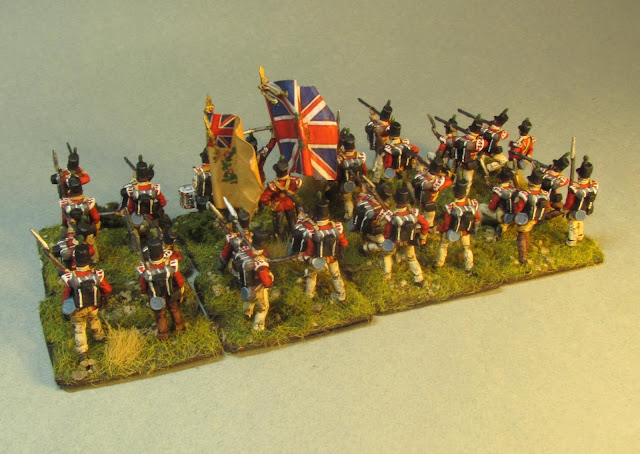 |
| A flurry of activity at the French command post as orders come and go. |
Slowly I have been adding a number of free standing ADC’s to my collection which you may have seen in earlier posts, beginning with the
British, moving on to the
Spanish and now tackling the French.
When I was painting up some of my original French command stands, I did a number with ADC’s present on the same stand in a variety of uniforms. But as our games advanced, we began to have need of ADC’s separate from the command stand that would carry orders and execute other functions common to the ADC.
If there was an official uniform for ADC’s, it appears to be the dolman and pelisse, shako or colpak, riding breeches and hussar style boots. But a little bit of research will show ADC’s in a myriad of different uniforms, often in uniforms that reflected the unit from which they were seconded or simply inventions of their commanding officer.
 |
| The Osprey illustration of Berthier's ADC, by Chris Warner |
According to Osprey’s Napoleon’s Marshals, Berthier’s ADC’s in 1812 wore a traditional Kinski-style tunic, dark blue with light blue cuffs, collar and facings. My research turned up a number of other ADC’s with light blue facings so I decided to go with that colour scheme. I also gave each of my two figures the armband that was a miniature of the sash worn by the commander they served - in this case, a white and gold brassard indicating a Marshal. (French marshals would typically have about a half dozen ADC’s on their staff.)
But I wanted to do my pair of ADC’s in more traditional dress, with the bicorne common to French officers in the earlier years in Spain and the long-tailed officer’s jacket. A long while ago I had been looking at the Zvezda French Napoleonic HQ staff set on Plastic Soldier Review, and was taken by one figure of an ADC mounting his horse. This was the inspiration for one of my figures, with the second simply riding “hell-bent for leather”.
 |
Zvezda figure mounting his horse.
|
 |
| Some of the references I found that inspired my ADC's uniform. |


The Build
These two figures, the dismounting (mounting?) one especially, probably represent my most ambitious conversions to date. I began with a couple of HaT Grenadier Horse Guards, partially because I liked their dynamic poses, partly because I have no other use for them in the Peninsular Wars! Bearskins were lopped off and replaced with bicornes, swords removed and replaced with written orders for one and a riding crop for the other. With the dismounting figure, I sliced him up in pieces, twisted the torso, and changed the positions of both legs and arms.
 |
| The initial chop and glue, giving them bicornes, and repositioning the arms and legs and twisting the torso on the figure on the left. The one on the right loses his sword and gains a riding crop. |
 |
| A bit of work on the horse blankets, tassels, a plume is added to the bicorne and epaulettes to the coats. |
 |
| The figure on the right needed his coattails reconstructed. I also gave him orders rolled into a scroll in his right hand. |
 |
| Primed and ready to go! |









































